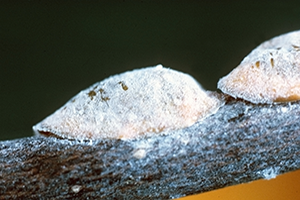Photo Credit: J.A. Davidson, Univ. Md, College Pk, Bugwood.org. Creative Commons Attribution-Noncommercial 3.0 United States (CC BY-NC 3.0 US) License; https://creativecommons.org/licenses/by-nc/3.0/us/.
Neolecanium cornuparvum
Common Name: magnolia scale
Animal Guild: Insect
Class > Order > Family: Insecta > Hemiptera > Coccidae
